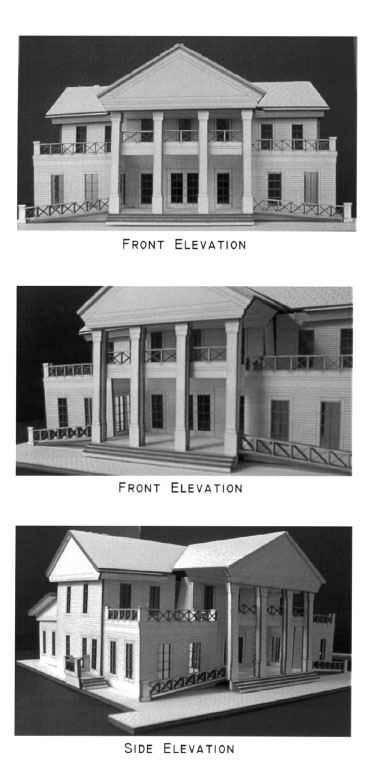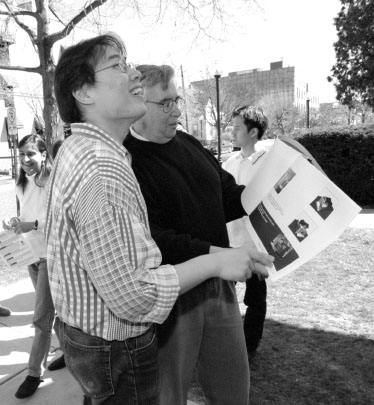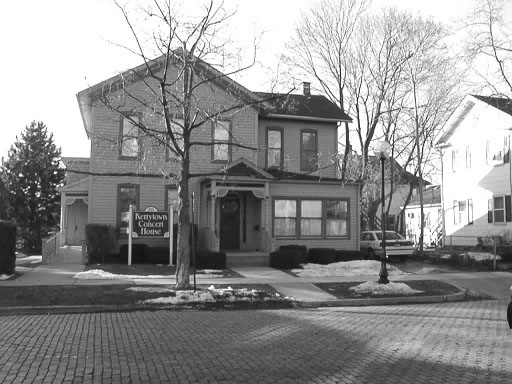The University Record, May 10 , 1999 By John Woodford
News and Information Services

In Harold J. Borkin’s graduate design studio course on obsolescence, students examine factors that make some buildings obsolete while other buildings are capable of being adapted to changing conditions.
This year, the class focused on Ann Arbor’s Kerrytown Concert House (KCH), which began life as a pre-Civil War Victorian residence at 415 N. Fourth Ave. Borkin, professor of architecture, selected the building for the master’s degree candidates project after KCH executive director Deanna Relyea told him she hoped to modify the structure and increase its 110 seating capacity to 150 or so.
“The class’s challenge was to make the building better,” Borkin says. “The objectives I gave the students were to enlarge audience capacity and improve sight lines, sound and comfort.”
After thoroughly surveying the building with video cameras and studying blueprints produced by the local firm of Hobbs and Black, the 14 students produced highly individualistic computer-graphic designs. They moved front and/or sidewalls and an interior wall. They produced varieties of enclosed porches for receptions as well as a restroom and grander kitchen facilities. They moved or added stairways and suggested many other innovations.

“The designs from the 14 architects in the class were a shot in the arm for us,” Relyea said. “They show us the directions a project could take.” Now Relyea’s goal is to obtain the local and state arts grants and donations that would help finance the $100,000—$150,000 project.
Local developer Carl Brauer bought the house in the 1980s and planned to demolish it and use the space as a parking lot for his Fifth Avenue office building. A neighborhood group convinced the city to save the building as a historical structure, and Brauer began renovating the house with an eye toward converting it into offices or a retail store.

“Just as the house was being gutted, I came on the scene,” recalls Relyea, a School of Music alumna who is also a pianist and singer. “I signed a five-year lease with Brauer and created the concert house.” Relyea tore down inner walls to create the now internationally known, intimate L-shaped hall, and raised enough funds over the years for the nonprofit KCH arts organization to purchase the building.
Relyea hopes the University also will take an interest in the project. U-M music students are increasingly using the concert house as a site for their graduate recitals, since space is tight at the School of Music. “Perhaps other student project groups could take up other phases of the project, along the line that Harold Borkin’s class has begun,” she says.

